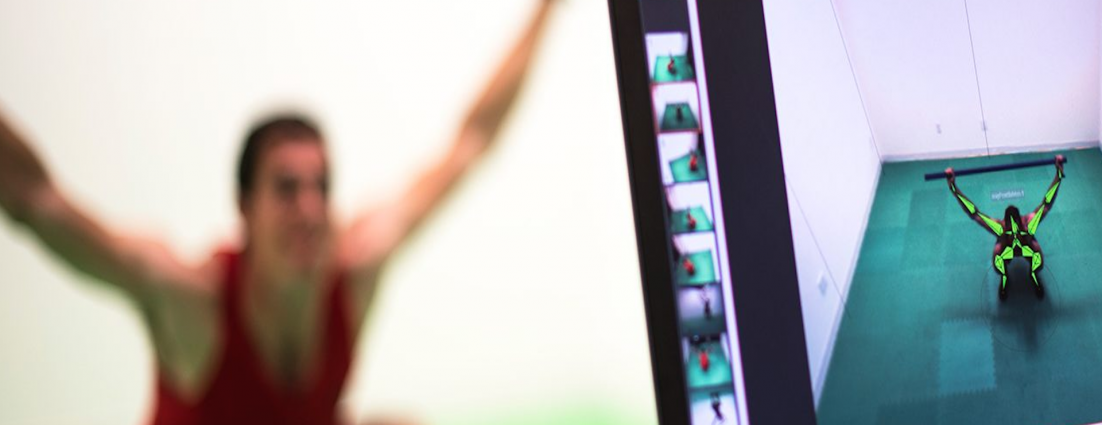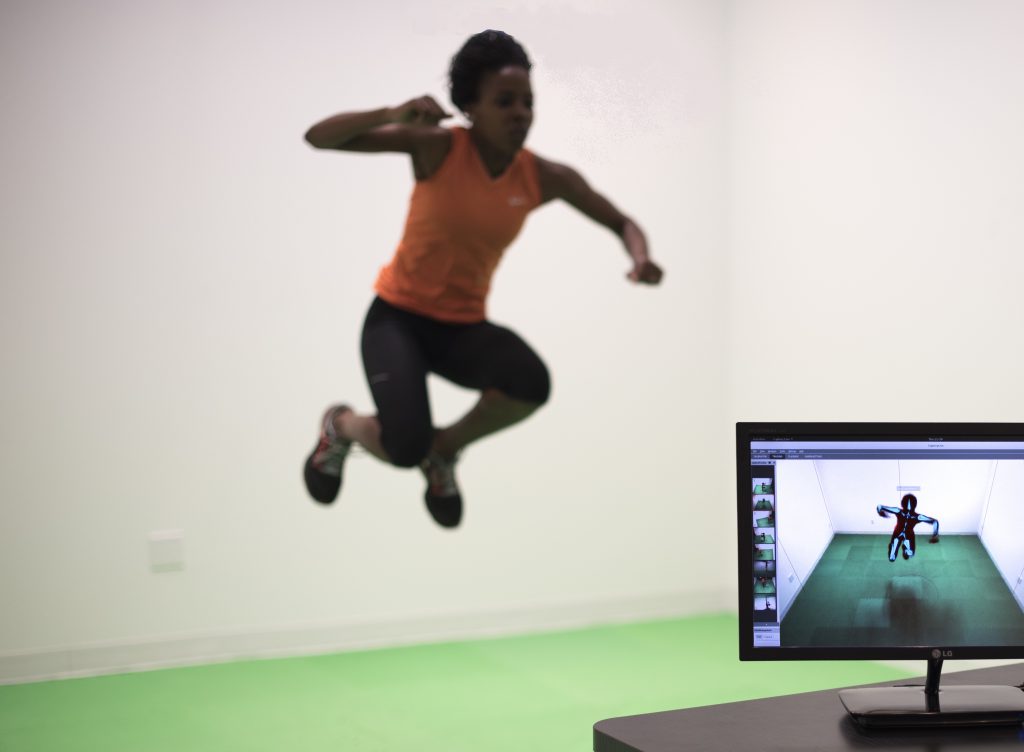DARI, When Is My Next Injury Coming?
09.21.2017 | Gabbi Hall

We’ve all wondered, “What if?” What if I’d done 100 more squats last summer – would I have skied fast enough to qualify for nationals? What if I had taken that day off from skiing – would I have crashed another day and still hurt my knee? “What if?” can be a maddening question to ask. DARI, a motion capture system, is working to remove some of the guesswork from athletic performance through a markerless camera-driven platform that provides analysis of athlete biomechanics in mere minutes.
The system is not unlike animation systems used in Hollywood films. If you’ve seen the movie Avatar, you’re probably aware that producers did not put Zoe Saldana in a giant blue suit for her role. Instead, she wore a suit covered in sensors and cameras surrounded to read her body movements before the characters were created using her motion and computer animation. The beauty of the DARI system is that there is no need for sensors to be placed on the body. Instead, it uses an eight-camera system to measure movements, making it much more time and cost effective for athletic programs – not to mention more accurate because it eliminates human error when placing sensors. Plus, it generates reports for athletes, coaches, physical trainers and doctors in minutes, not days like similar systems.
Winter Park Competition Center (WPCC) recently invested in the DARI system, bringing the technology in-house to help its athletes.
“In this specific case with Winter Park ski team, we’re looking at their athletes and how they move from a musculoskeletal standpoint,” explains Skip Allen, vice president of business development at Scientific Analytics, Inc. “We can look at range of motion. We can look at how they produce force. We can look at symmetries, asymmetries.”
The ultimate goal in work with Winter Park and ski racers at large is to monitor developing athletes and how they mature physically in order to be predictive and proactive in terms of musculoskeletal health. In layman’s terms, the goal is to be able to prevent injuries and help athletes reach peak physical fitness. To reach that goal, WPCC and DARI are working together on a study featuring Winter Park athletes, monitoring their physical fitness over the course of a year.
“So, if we see that one side in a bilateral squat is being favored compared to the other, we know that that leg is being pressured more and under more stress,” explains Stephanie Zavilla, director of sports performance at WPCC. “We actually had an athlete who was recovering from an ACL [injury] involved in the study, and we saw her favoring her “good” leg, and then all of a sudden that leg was under so much stress that lo and behold during the season, she blew that ACL. So, what we’re hoping to find from this study is to basically look at injury prevention and ask, ‘Can we see warning signs, red flags, ahead of time and address them before it’s too late?’ and then look at how we can function more optimally just by adjusting and tweaking little things in terms of movement and addressing asymmetries or compensations in the body to enhance performance.”
While that athlete suffered a second injury, many of the athletes in the study have been able to use the information provided by the DARI system to maintain strength and fight fatigue during the course of the race season.
“In previous years, we’ve seen athletes when they’re engaging with their rigorous schedule with training and competing and they’re always on the road, they would have a great strength and power base going into the season because they spent the whole summer working to build that up, but then what we would see is that as the season would progress, those numbers – strength and power – would slowly dwindle,” shares Zavilla.

In the case of athletes in the study who were able to use the DARI reports to create custom training plans with conditioning coaches, they maintained their strength throughout the season, and in most cases, were able to decrease levels of dysfunction which are generally the predictors of injury. The study itself is still ongoing and will measure the U14-U19 athletes through the summer.
Since beginning the study, WPCC has opened up the DARI system as an option for all its athletes at the cost of $100 per scan. The scans are valuable in two major ways. First, for a recovering athlete, these scans can be shared with coaches, doctors, physical therapists, and trainers to ensure the entire support system is aligned with the athlete’s strengths and weaknesses as he or she prepares to return to snow. Secondly, as WPCC builds its database of measurements, it will be able to compare junior athletes with successful alumni from the program.
“We do have some interest from some of our alums that are now college racers that we are hoping to get in as well to see almost as a goal, as a marker, towards where we want some of our younger athletes to start developing,” Zavilla shares.
As more athletes are scanned, the WPCC has started to detect more general trends among the skiers and has already identified better ways for skiers to increase power.
“One of our trends we found in our athletes is that a lot of them are hamstring dominant, their primary movers for their squats and their jumps,” the director of sports performances explains. “And that means they’re sort of bypassing the strongest muscle in the body, that glute. So, we’re looking to get more power and more strength from these athletes by engaging that glute, so a lot of work’s been focused on that.”
In a perfect world, athletes would get scanned once a week because of how quickly physical change happens. However, that proposal is both costly and unrealistic with ski racers’ travel schedules. Zavilla agrees that monthly scanning is a great place to start.
“Looking at this study, we found that once a month is OK, and we can still learn a lot from it,” Zavilla says. “And we can still periodize based on that, and it can really contribute to the success of these athletes. It depends on what the athlete wants to do, and cost like anything else is a factor.”
This concept of periodization allows the WPCC staff to better address athlete fatigue throughout the year, and DARI helps take the guesswork out of whether an athlete is being over or underworked. Based on scans, trainers can determine that they need to lighten the workload because an athlete is showing signs of exhaustion, or they can see where the athlete has reserve power to get stronger.
“These are young kids,” Allen says. “They have a lot going on outside just racing, too. We look at them and say, ‘What is the volume of workload that’s being placed on these athletes? How is that affecting them from a musculoskeletal standpoint?'”
With each scan, staff can create custom training protocols for athletes to help them perform their best and give them a competitive edge. DARI is making individualized programming scalable for large programs like WPCC, so their athletes can stop wondering “What if?” when it comes to physical fitness.